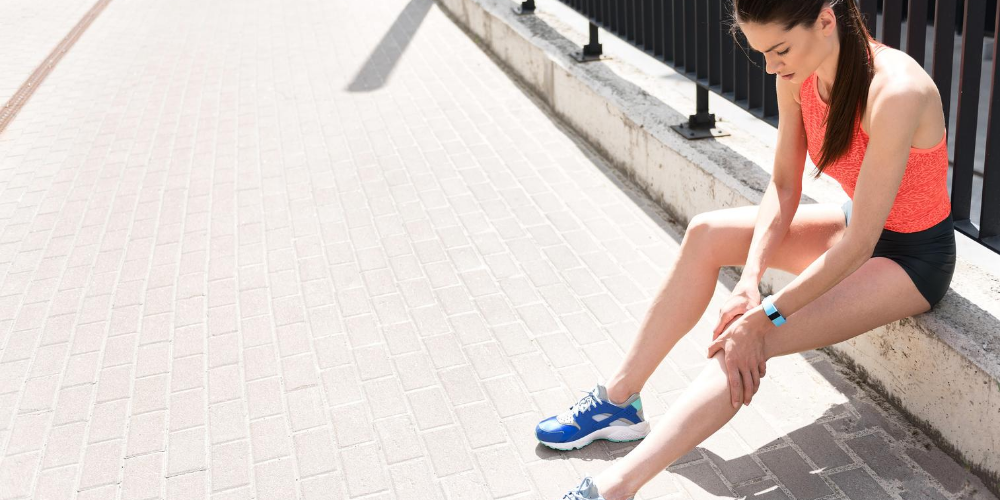Psoriasis is a common, chronic skin condition. The immune system generates inflammation in the skin, as well as other bodily tissues. Inflammatory chemicals spur excessive multiplication of cells in the epidermis or outer layer of skin. Normally, new cells continually form at the base of the epidermis and move to the top, where they slough off. In psoriasis, new cell production outpaces the shedding of old cells, leading to a pileup at the surface, like an unraked lawn in autumn. These raised patches on the skin are called plaques. The pink or red patches are sometimes itchy and topped by silvery scales. There may be one patch or many. The scalp, elbows, buttocks, and knees are most commonly affected. Although scientists have yet to pinpoint the exact cause, both genetic and environmental factors contribute to psoriasis.


1. Mega Omega Salmon Salad
How it works: Salmon is high in omega-3 fatty acids, which have anti-inflammatory effects. The eicosapentaenoic acid (EPA) in fish oil may be particularly valuable. A few studies have shown benefits from oral and topical preparations of EPA.
- PREPARATION:
- 1 pound (455 g) salmon fillet or 4 salmon steaks, preferably wild
- ¼ cup (60 ml) fresh lemon juice
- Salt and freshly ground black pepper
- 2 onions, diced
- 1 tablespoon (15 ml) olive oil
- 1 tablespoon (15 ml) balsamic vinegar
- 1 tablespoon (4 g) minced fresh dill
- Sliced cucumber, capers, and fresh parsley, for garnish
- DIRECTIONS:
Preheat the oven to 375°F (190°C, or gas mark 5).
Place the salmon in a baking dish and brush the fish with lemon juice. Sprinkle with salt and pepper. Bake for 20 minutes. Remove from the oven and let cool.
Skin and debone the fish, and then slice the salmon into chunks and toss it into a large bowl along with the onion. In a separate bowl, combine the oil, vinegar, and dill. Pour over the salmon chunks and toss. Add salt and pepper to taste. Refrigerate for 20 minutes. Garnish the final dish with cucumbers, capers, and parsley. Serve chilled.
- YIELD: 04 SERVINGS
2. Fish Oil Skin Soother
How it works: As noted previously, preliminary research indicates that topical applications of the EPA (eicosapentaenoic acid) in fish oil may improve psoriasis symptoms.
- PREPARATION: Fish oil capsule
- DIRECTIONS: As noted previously, preliminary research indicates that topical applications of the EPA (eicosapentaenoic acid) in fish oil may improve psoriasis symptoms.
- YIELD: 1 CAPSULE PER APPLICATION
3. Aloe Skin Soother
How it works: Topical aloe gel reduces the redness, inflammation, and flakiness of psoriasis. One study found an aloe cream slightly more effective than a topical steroid.
- PREPARATION: 1 Aloe vera plant
- DIRECTIONS: Select an aloe leaf and split it open lengthwise with a clean knife. Scoop out the gel. With clean fingers, smooth the gel over the affected area.
- YIELD: 01 APPLICATION
- NOTE: Alternatively, buy commercially packaged aloe that’s 99 to 100 percent aloe gel.
4. Vitamin D Treatment
How it works: Studies show people with psoriasis often have low levels of vitamin D, which favorably alters the immune system. Oral and topical derivatives of vitamin D3 can improve symptoms. In fact, the prescription ointment calcipotriol is a synthetic derivative of vitamin D.
- PREPARATION: Oil-based vitamin D3 supplement
- DIRECTIONS: Take your dosage by mouth. The Institute of Medicine recommends 600 IU a day for people from age one to seventy. Consult with your doctor about proper dosing.
- YIELD: 01 APPLICATION
- NOTE: Alternatively, you can puncture the oil-based capsule (more than one, as needed) and apply it to your skin.
5. Do the Avocado Mash
How it works: Avocado contains monounsaturated and polyunsaturated fats. In one study, a cream containing avocado oil improved psoriasis.
- PREPARATION:
- 1 ripe avocado, cut in half, and pitted
- Warm water
- DIRECTIONS: Scoop out the fruit into a clean bowl. Mash and apply to patches of psoriasis. Allow drying. Wash with warm water and pat dry with a clean towel.
- YIELD: 1 APPLICATION FOR ONE LARGE OR SEVERAL SMALL AREAS
6. Calming Capsaicin Rub
How it works: Chile peppers produce the hot-tasting powder cayenne. Capsaicin is a key ingredient in cayenne. Capsaicin depletes substance P, a chemical involved in pain transmission. Substance P also contributes to itching. Frequent applications of capsaicin cream can reduce itching associated with psoriasis.
- PREPARATION: 1 chile pepper
- DIRECTIONS: Wash the pepper. Cut lengthwise and remove the seeds. Rub a small piece over psoriatic skin. Be sure to wash your hands thoroughly with soap and water before touching your eyes, nose, genitals, or any cuts or scrapes.
- YIELD: 01 APPLICATION
- WARNING: With either product, expect to feel temporary heat before itching decreases.
- NOTE: Alternatively, buy a commercially prepared cream that contains capsaicin.
7. Chamomile Compress
How it works: German chamomile (Matricaria recutita) reduces inflammation, inhibits bacteria, and speeds wound healing.
- PREPARATION:
- 1 cup (235 ml) water
- 1 German chamomile tea bag
- DIRECTIONS: Boil the water and drop it in the teabag. Remove from the heat and let cool. Remove the teabag. Dunk a piece of gauze or clean cloth into the tea. Apply to the affected area.
- YIELD: 1 APPLICATION
- WARNING: If you’re allergic to chamomile, skip this recipe. If you’re allergic to ragweed or other plants in the same family, first try this recipe on a small test area, wait twenty-four hours, and stop if inflammation occurs.
8. Turmeric and Aloe Paste
How it works: Turmeric contains the potent anti-inflammatory chemical curcumin. Lab studies show that it has antipsoriasis activity when used both externally and internally. Anecdotal reports suggest that it reduces symptoms when taken internally through capsules or added as a spice to food. Aloe has its own benefits and can help move other chemicals across the skin.
- PREPARATION:
- 1 tablespoon (7 g) ground turmeric
- Aloe Vera gel
- DIRECTIONS: Put the turmeric in a small bowl. Mix in just enough aloe gel to make a paste. Dot onto patches of the inflamed skin. Let the paste dry for about 15 minutes. Wash away.
- YIELD: 1 APPLICATION
- WARNING: Some people develop contact dermatitis (skin rash) from turmeric. Try a small test patch first and wait several hours before applying again. Also, wear old clothing when using this treatment! Turmeric, which is also used as a textile dye, can stain clothes and temporarily yellow your skin.
Lifestyle Tip
- Expose yourself. Phototherapy with ultraviolet light B (UVB) is a conventional treatment for psoriasis. sunlight contains both UVB and UVA. the national psoriasis foundation recommends repeated, short exposure to sunlight—5 to 10 minutes of midday sun a day. once you finish your brief sunbath, avoid sun damage by applying sunscreen, covering with a hat and clothing, or seeking shade.
- Dab on tea tree oil with gauze or a clean cloth. New research suggests that the essential oil of the tea tree may counter psoriasis, perhaps because of its anti-inflammatory properties.
- Keep a container of ground cayenne pepper on your table next to the salt and pepper; add a pinch to vegetable sautés, salads, and bean dishes to spice them up—and get the benefit of capsaicin’s psoriasis-soothing qualities at the same time.
- Try this breathing exercise to reduce stress, which can trigger an outbreak. Find a quiet place. Sit in a relaxed position and close your eyes. Let your muscles melt. Breathe slowly and deeply. as you breathe in, imagine yourself bringing peace into your body, filling every pore. As you breathe out, expel the anxiety and negative feelings. Repeat four times.
When to Call the Doctor
- You have symptoms and signs of psoriasis but have yet to receive a diagnosis.
- Treatment has failed to control the condition.
- Prescribed medications have caused undesirable side effects.
- You develop signs of a skin bacterial infection: localized redness, swelling, increased warmth, tenderness, and yellowish discharge.
- You develop signs of psoriatic arthritis: pain, swelling, and decreased mobility at the joints.






Leave a Reply